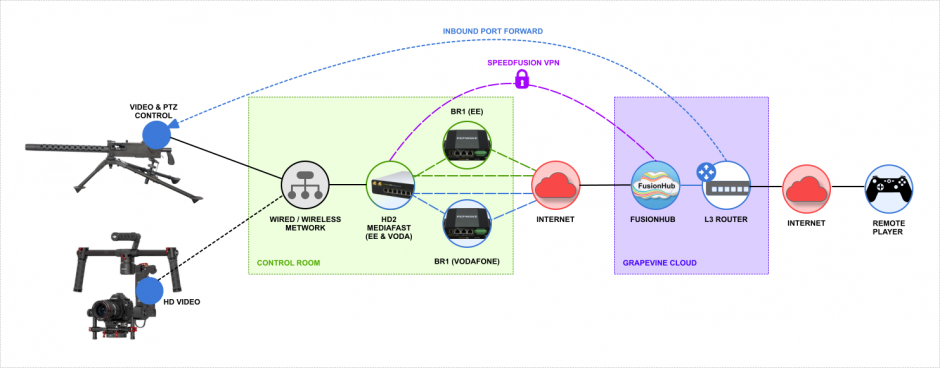Five days ago Real Life Hitman from Realm Pictures was released on youtube, and follows what is fast becoming a massively successful series of awesome real life first (and now third) person interactive action games.
The idea is elegantly genius, find a location with massive production value, fill it full of actors and set and clever interactive props and set pieces, weave in a storyline with interactive challenges and invite players to control the lead character and action live from remote locations. The end result is so beautiful and immersive and Realm Pictures have gotten so good with their craft that it possible to mistake the live footage for some futuristic generation of game play.
The magic of movies produced to this level can only come from intensive planning, hard work and complex behind the scenes infrastructure, from the catering staff that have to feed the red bull powered production team and actors, to the complex lighting, audio and data network connected devices that enable control and monitoring of the entire environment from the command centre.
In the case of Real Life Hitman, shot in Oldway Mansion in Torquay, there were 22 actors who were all equipped with radio mics and ear pieces to allow them to be choreographed in response to the live players actions, along with 30 HD IP CCTV cameras around the site to monitor agent 47’s location and progress. These were cabled back to the core network infrastructure which also supported a site wide 5Ghz wireless network to enable the live streaming of the HD video from the wireless gimbaled camera rig back to the command center. Of course, lets not forget the IP enabled tripod mounted gatling gun with live video streaming from the scope and full pan and tilt control for remote aim and firing live by the remote players.
The players were based in Los Angeles and London, accommodated in the offices of one of the best know global tech brands with high speed fiber connectivity. The mansion however had no fixed line connectivity to speak of and that’s why Grapevine Connect – a UK Peplink partner, got the call from Realm Pictures to help provide a resilient high bandwidth solution. Grapevine had worked with Realm Pictures on their previous Live First Person Shooter in the disused Fawley Power Station so pretty much knew what to expect, however the requirement for inbound device control and a separate two way audio channel made this solution a little different than the last one.
Resilient high bandwidth cellular connectivity
Grapevine’s solution was to combine a HD2 mediafast with a pair of BR1 LTE routers on its WAN ports. This provided four multi operator LTE connections and local web caching on site to help reduce the amount of bandwidth consumed by general web browsing and internet activity. Cellular coverage was good at the mansion, with strong signal on EE and Vodafone so bandwidth this time was not the biggest challenge, instead the area of focus was on guaranteeing the session reliability of the video stream and engineering the inbound connectivity for the control of the interactive set pieces (like the gatling gun).
‘Normal’ cellular data connections do not come with Public IPs that would allow for inbound port forwarding to give the remote players computers access to the live stream from the guns scope video feed or to enable inbound control of its aiming mechanism. You can of course get SIM cards with support for public IPs but these are more expensive and if the cellular connection were to fail, remote gun control would be lost, relying on a public IP locked to a single cellular link was not resilient enough. Since Grapevine were planning to use a FusionHub instance hosted in their private cloud anyway (to use SpeedFusion VPN for resilience and bandwidth aggregation), they decided to configure inbound port forwarding in their cloud too. This meant that the inbound port forwarding would be transported over the SpeedFusion tunnel and not tied to a single WAN link on the HD2.
Realm Pictures could then forward as many ports as were needed at from the cloud IP address to the devices on their local network. The end solution looked like this:
Everything worked as expected, and apart from the usual fine tuning needed when combining multiple LTE connections like this (due to cellular bandwidth variation during the day, and occasional cell tower contention) it required very little support. Any remote support that was required was performed using InControl 2 – Peplinks SD-WAN Controller, which allowed for full remote access of all the Peplink devices and continuous bandwidth monitoring and reporting.


